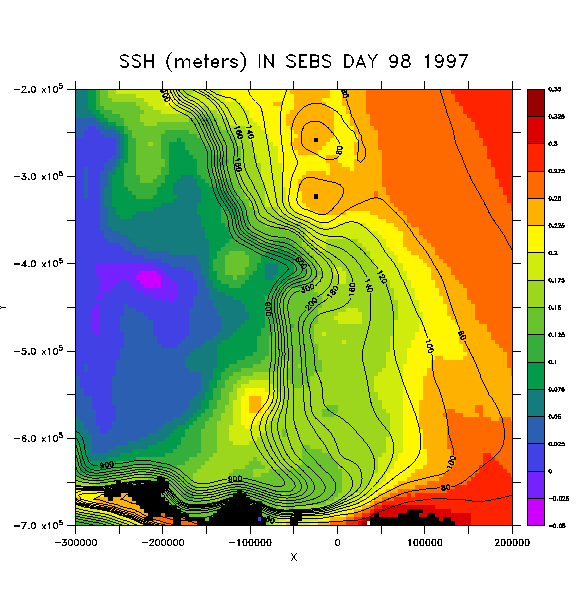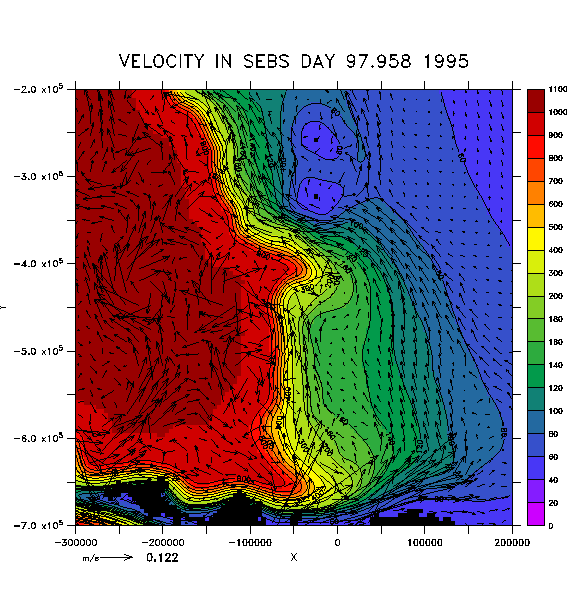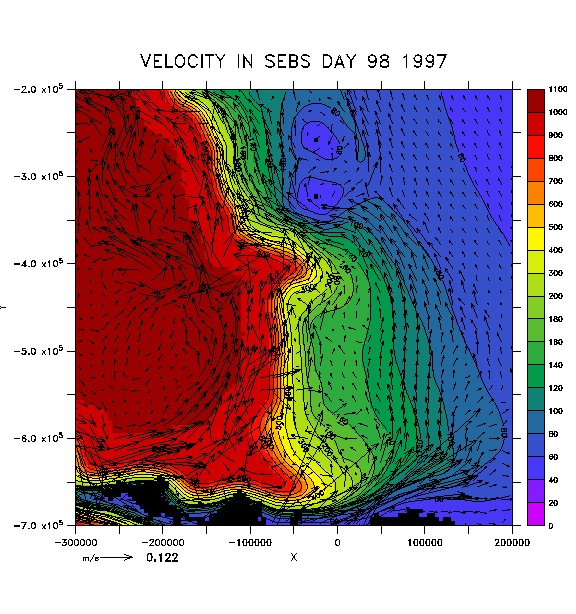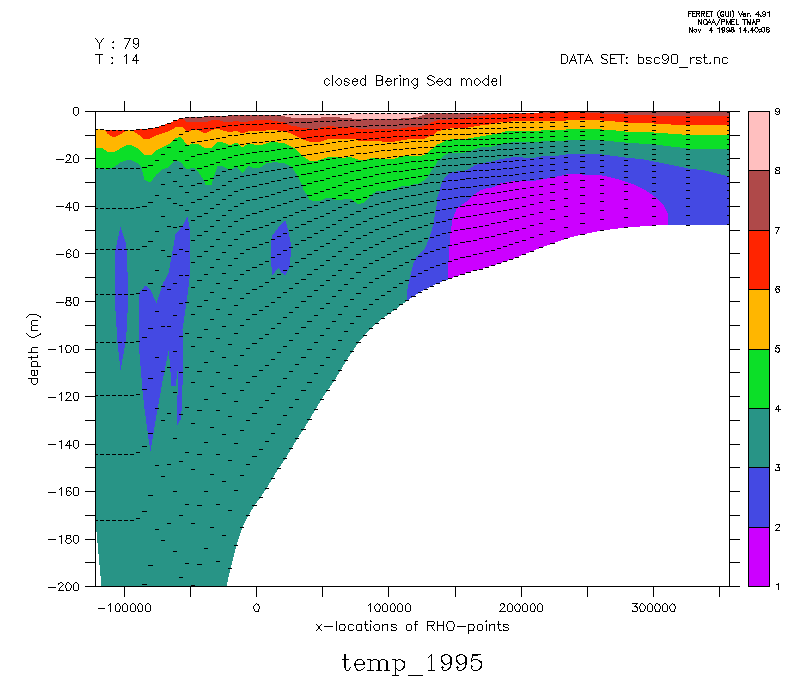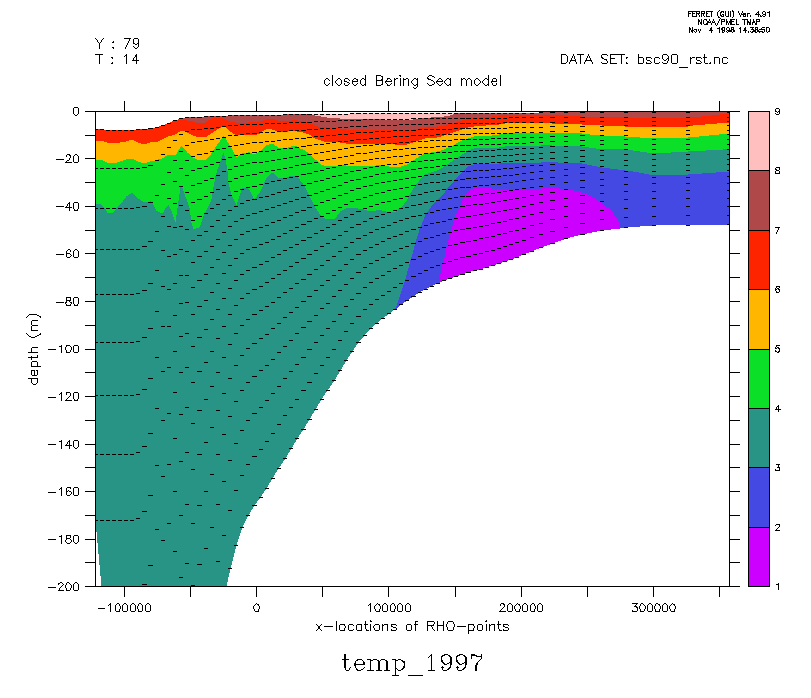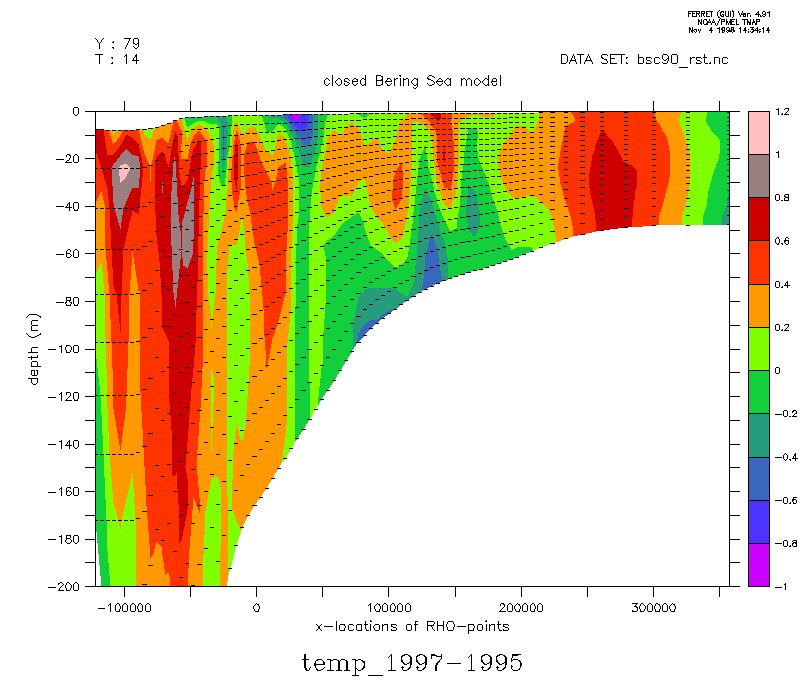SEBSCC Modeling Results 1998: Regional Tidal Plus Subtidal Results
We have completed both idealized runs of the regional model with tidal
plus subtidal forcing, and specific simulations of 1997 and 1995 with
tides, wind, and heat flux forcing. First, here are some results from an idealized sixty-day spinup run with M2 tides and
subtidal forcing (idealized Aleutian North Slope Current and Alaskan Stream) but no wind or heat flux.
In this case the model is implemented on a grid with 4 km spacing; the
model domain is centered on the southeastern corner of the Bering Sea.
The orientation of the y-axis is northwest-southeast in these figures.
Model bathymetry is shown as solid lines in (a)-(c); contour interval
is 10m for 0-200m and 100m otherwise.
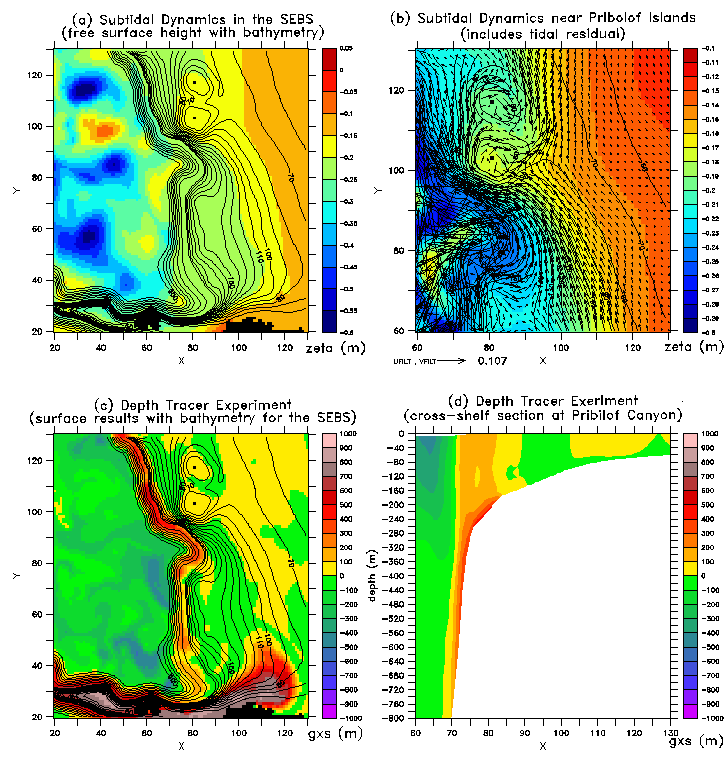
 US Dept of Commerce /
NOAA /
OAR /
ERL /
PMEL
US Dept of Commerce /
NOAA /
OAR /
ERL /
PMEL
 US Dept of Commerce /
NOAA /
OAR /
ERL /
PMEL
US Dept of Commerce /
NOAA /
OAR /
ERL /
PMEL

